The Most Populous Countries
Can you name the most populous countries in the world? Of course, India and China come to mind. But you definitely won’t guess the other eight! Luckily, you can read about them here.

Shattered Expectations
From my own observations, the largest countries often seem to be those frequently mentioned in history textbooks and the news. Naturally, these include India and China, as well as the USA, Russia, Japan, Germany, Italy, France, and the United Kingdom. These are, after all, the most famous countries — how could they not be the biggest?
This perception of the world seems stuck in 1950, omitting Indonesia and Brazil somewhere along the way. Even back then, these countries ranked seventh and eighth in the global population standings.
Today, as those born in 1950 turn 75 years old, the situation has become even more interesting. The number of “famous” countries in the top ten has shrunk considerably. The most populous Western European country, Germany, now occupies the 19th spot with its 84 million inhabitants.
I think that after becoming familiar with this list, you may see the world somewhat differently.
The Top 10 Most Populous Countries
For each of the countries below, you will find a chart illustrating the growth of its population since 1950. The data is sourced from PopulationPyramid.net.
- India: 1,463,865,525;
- China: 1,416,096,094;
- United States of America: 347,275,808;
- Indonesia: 285,721,236;
- Pakistan: 255,219,555;
- Nigeria: 237,527,782;
- Brazil: 212,812,405;
- Bangladesh: 175,686,900;
- Russian Federation: 143,997,393;
- Ethiopia: 135,472,051.
India
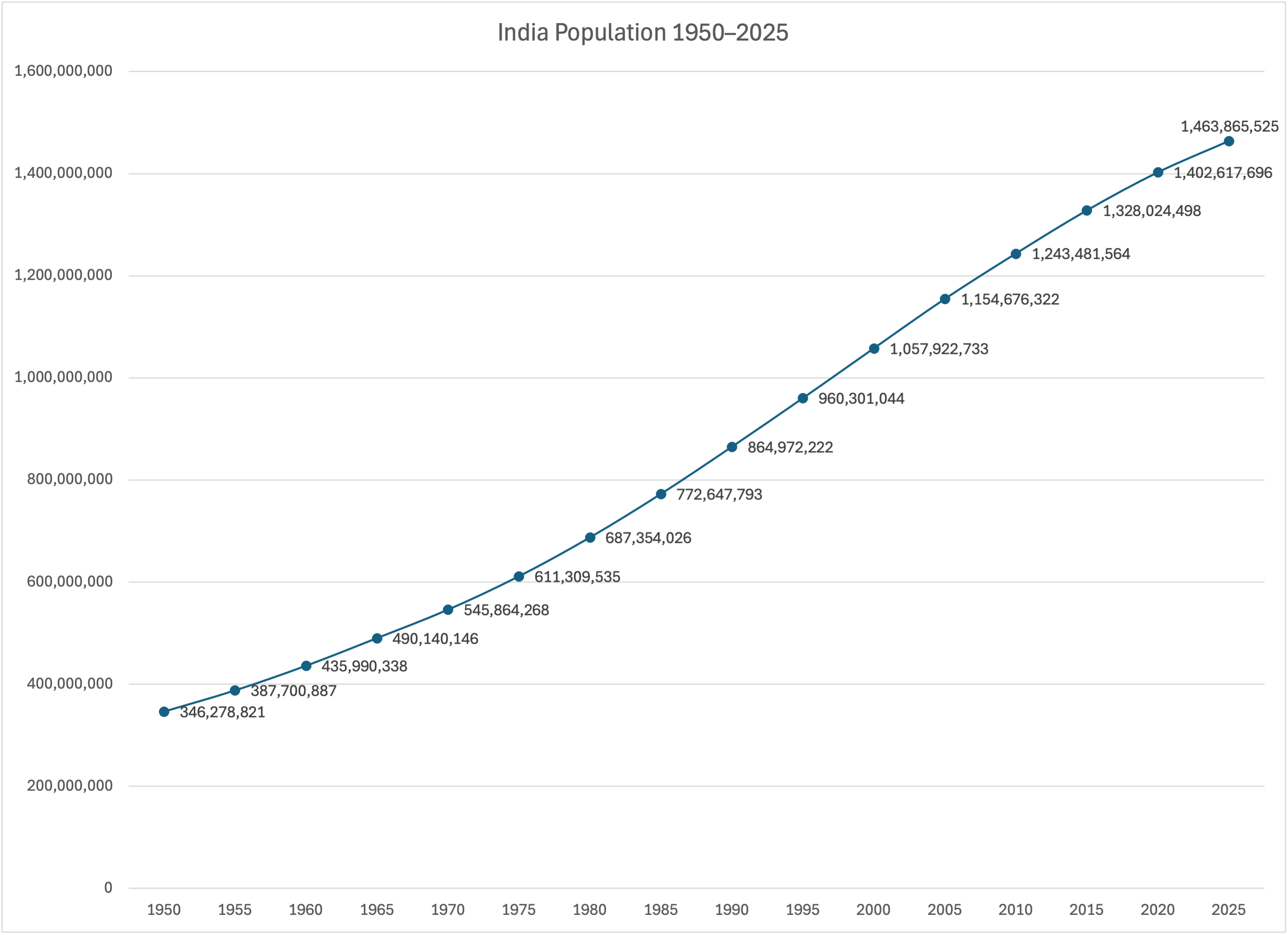
China
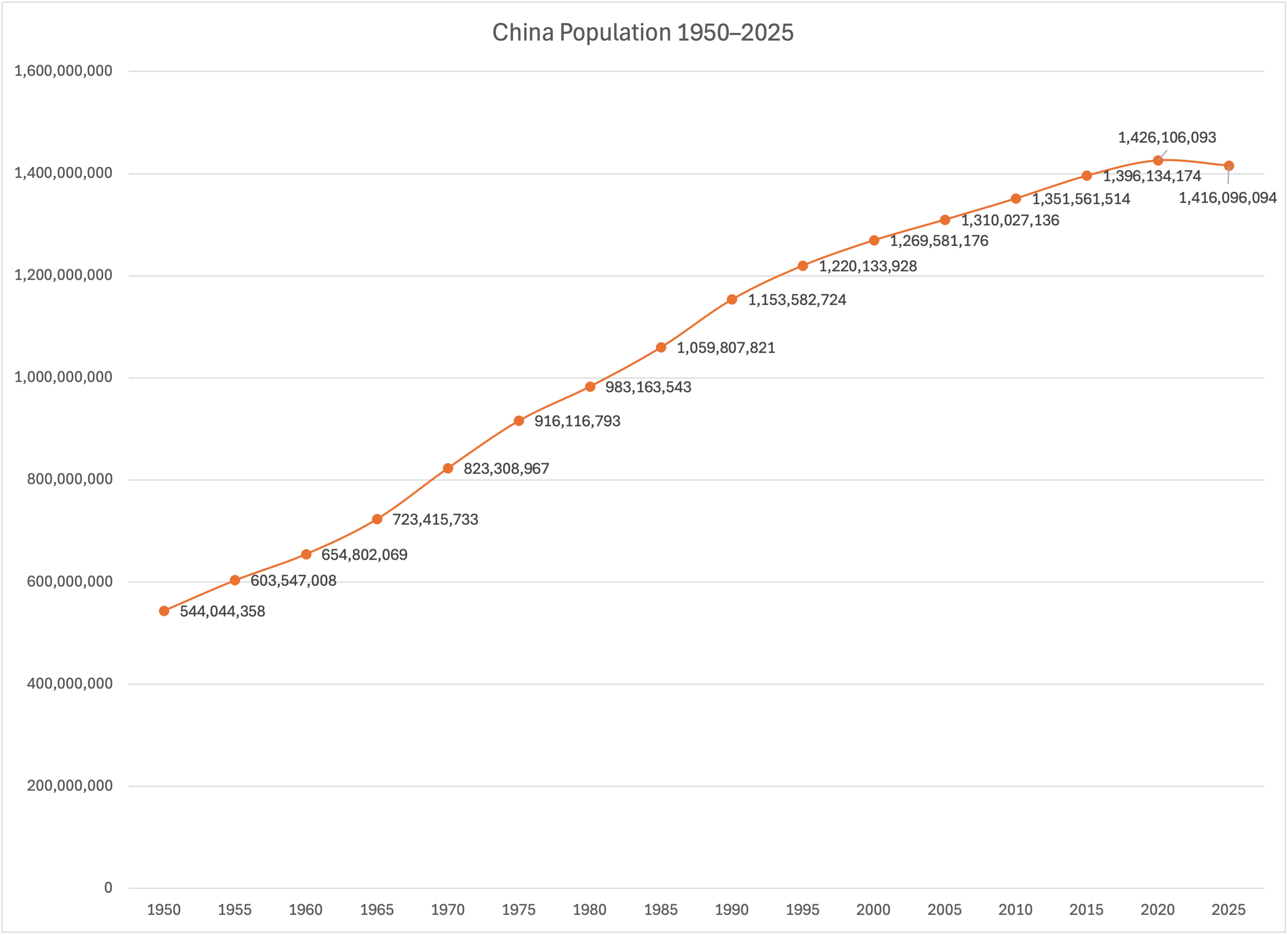
United States of America
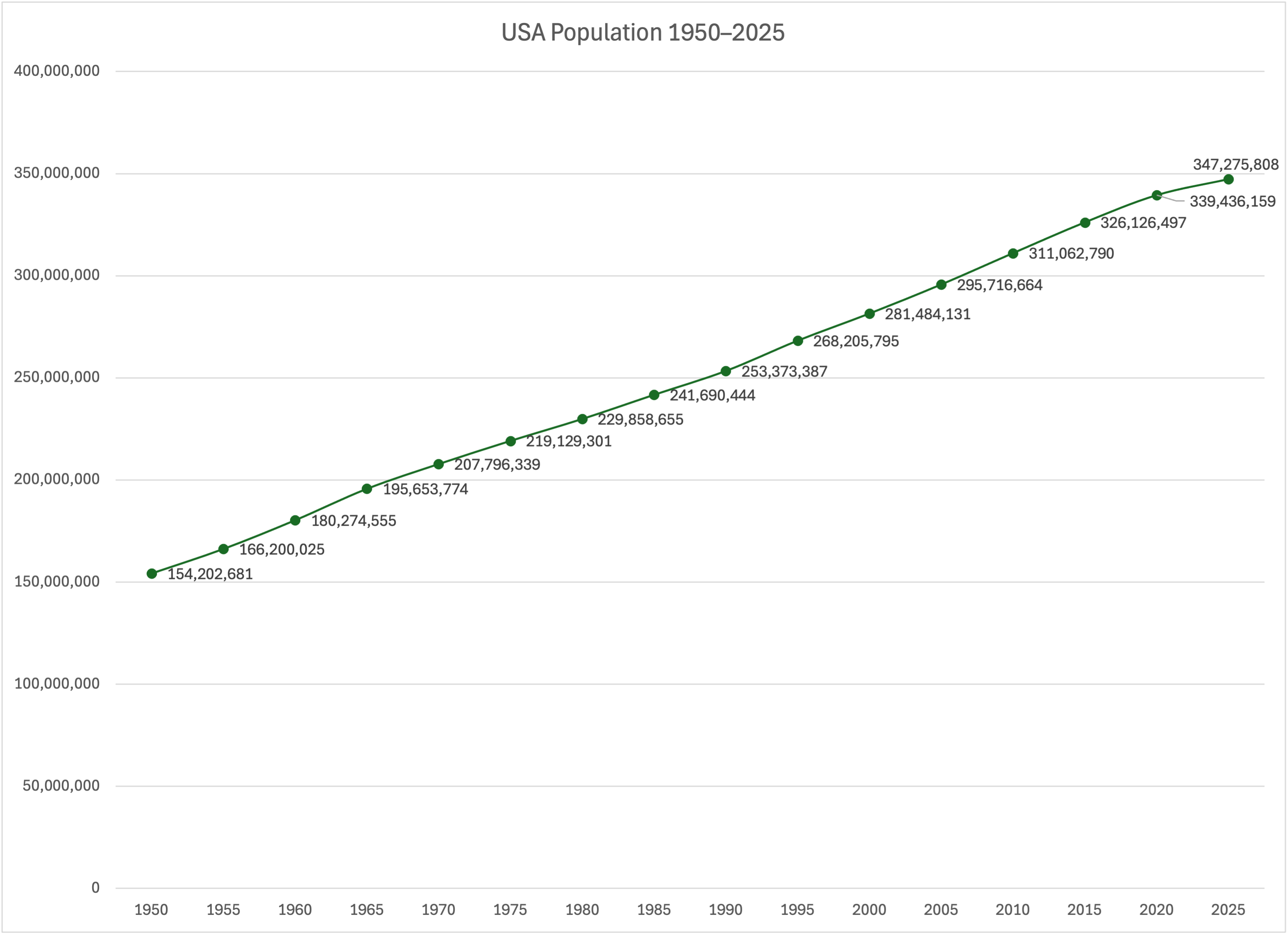
Indonesia
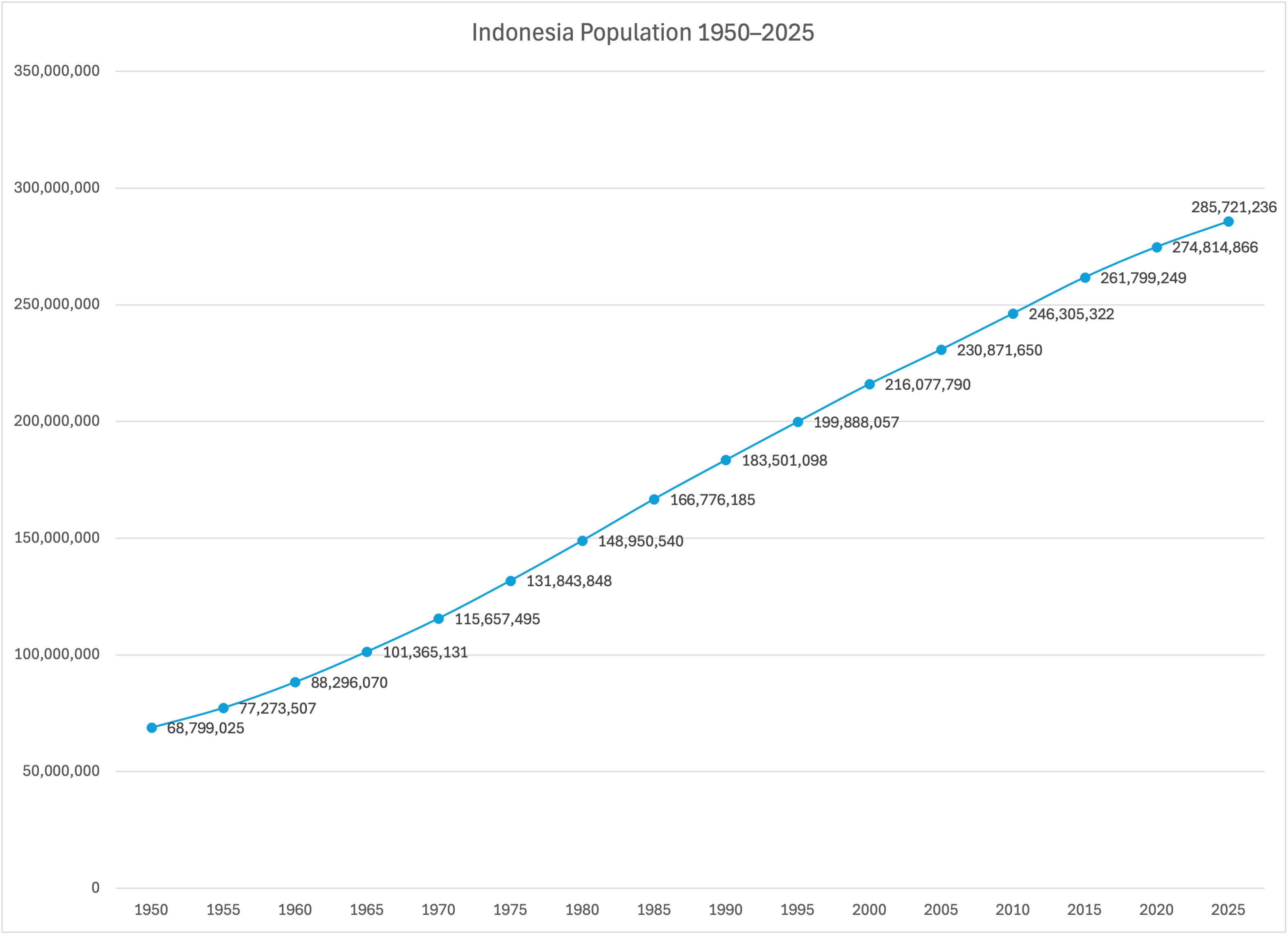
Pakistan
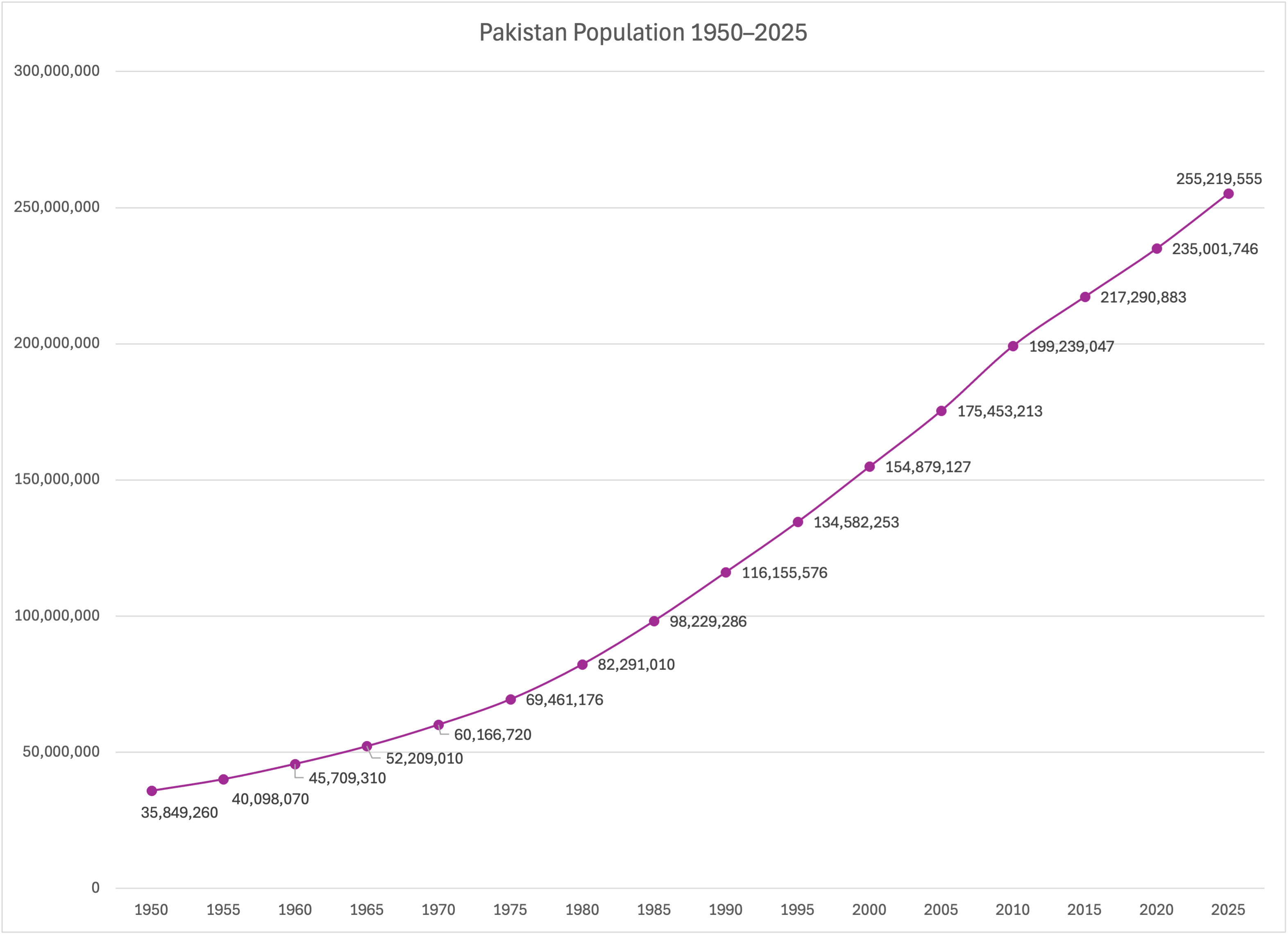
Nigeria
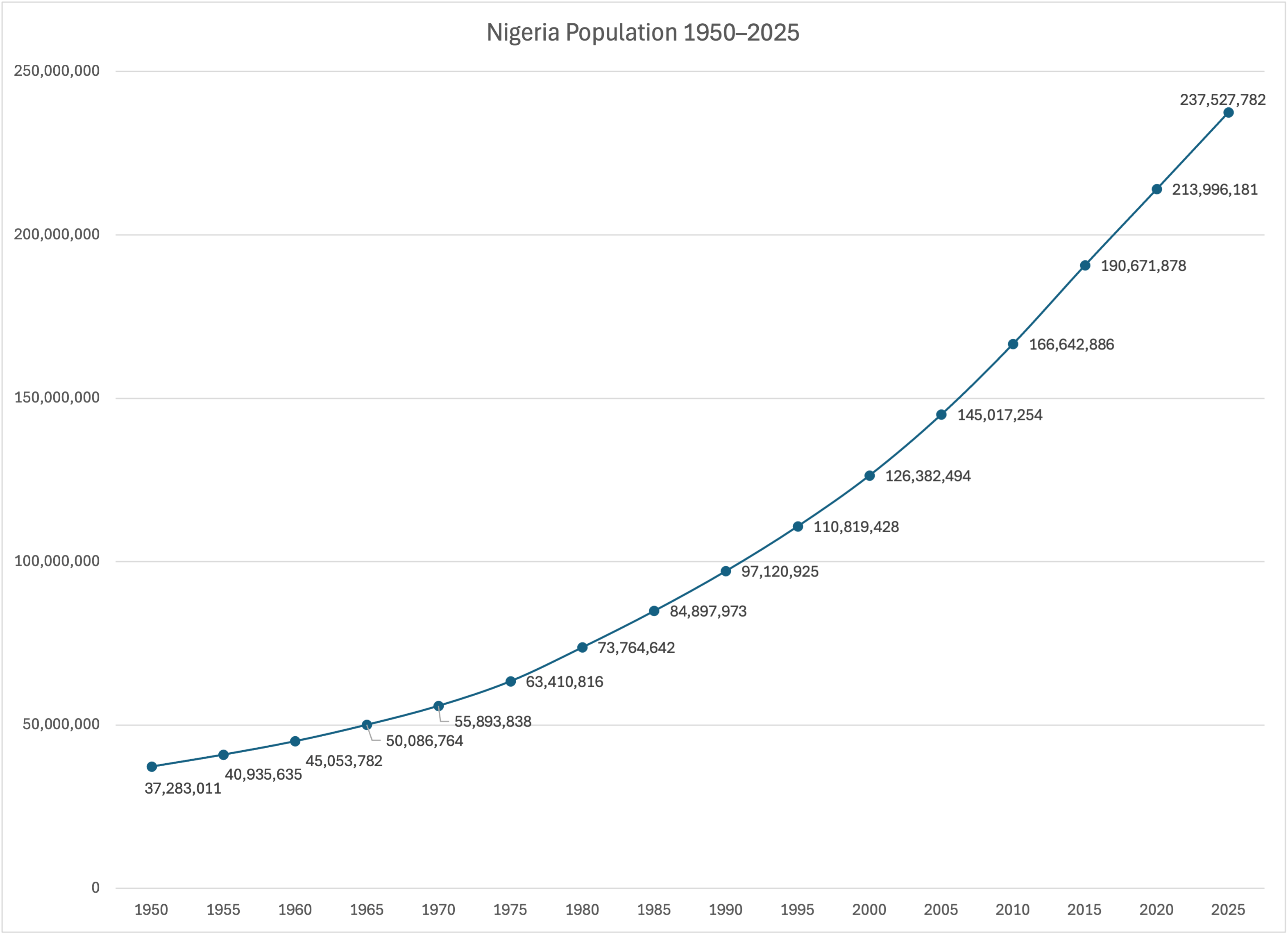
Brazil
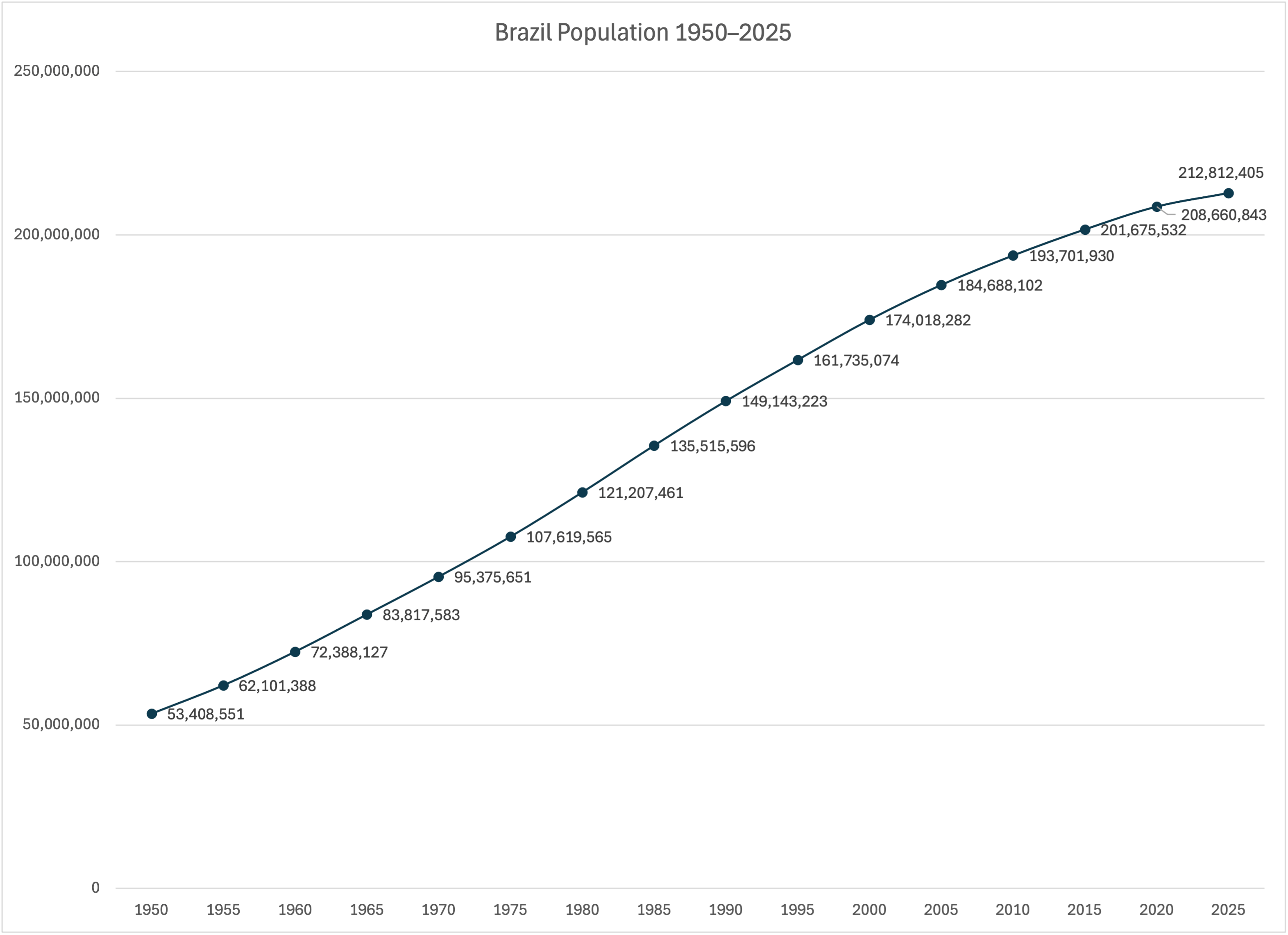
Bangladesh
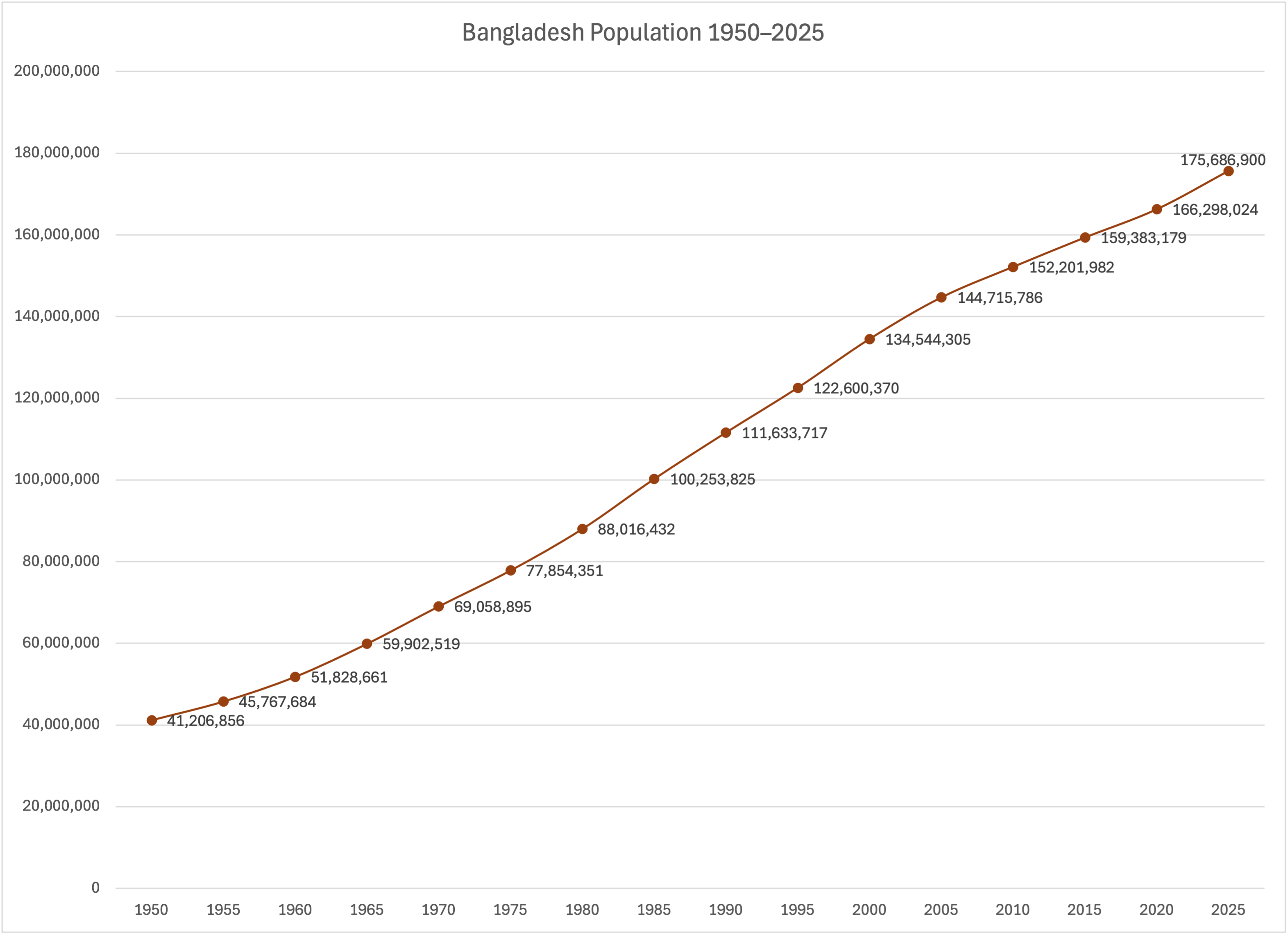
Russian Federation
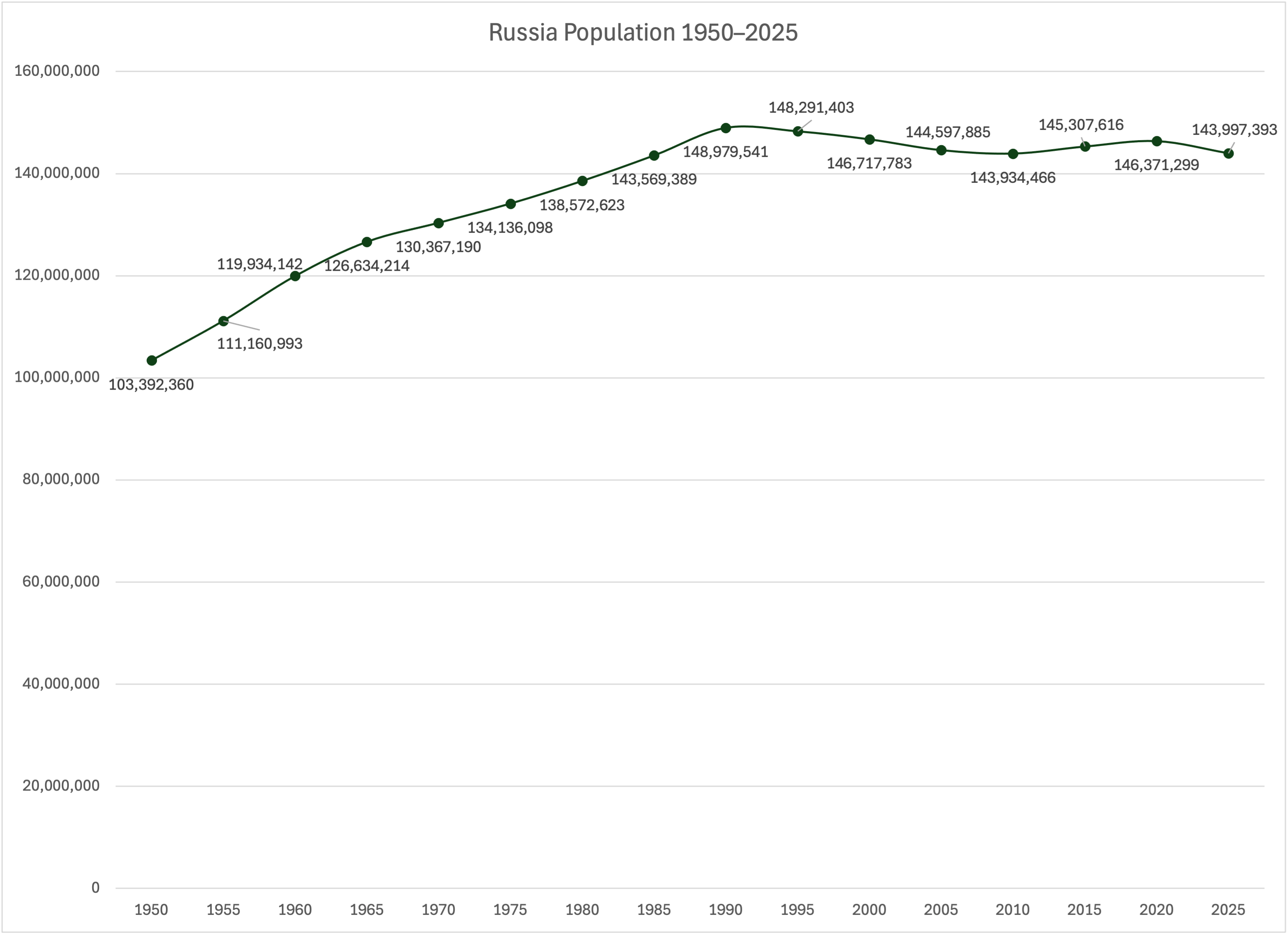
Ethiopia
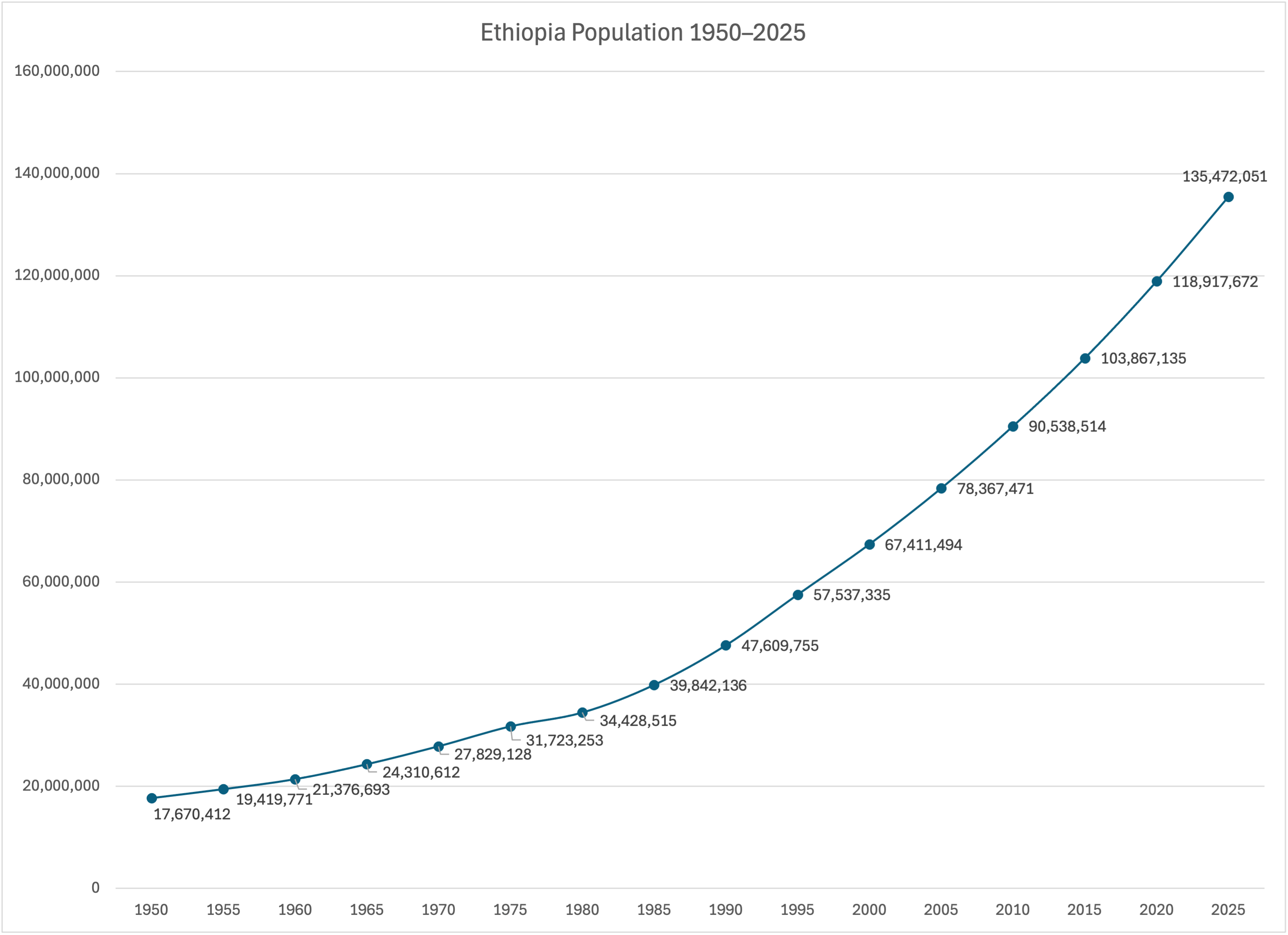
In Conclusion
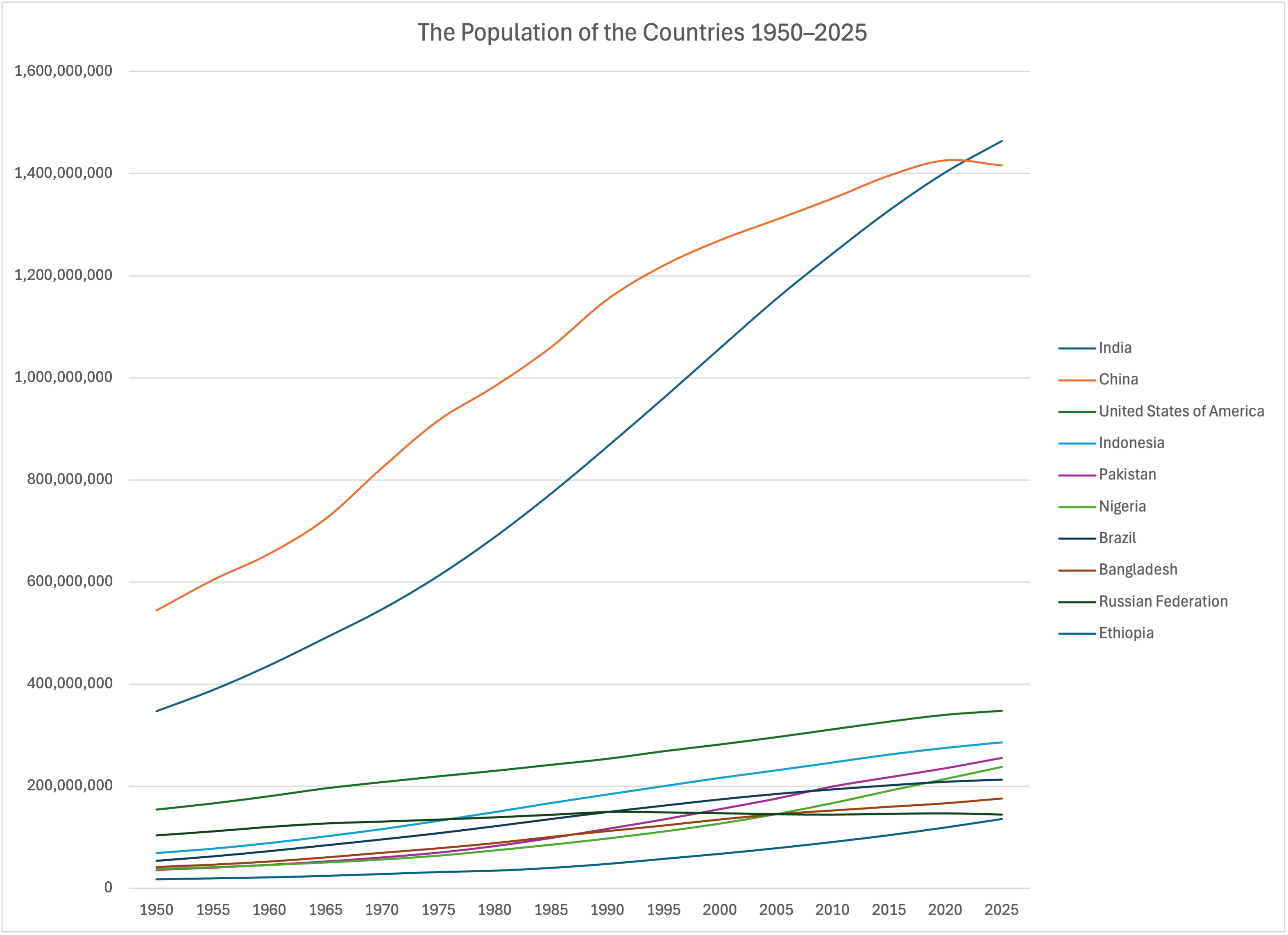
Since 1950, four countries have dropped out of the top ten: Japan, Germany, the United Kingdom, and Italy. Replacing them in 2025 are Pakistan, Nigeria, Bangladesh, and Ethiopia. It feels likely that this shift will have some influence on the world by 2100, another 75 years down the line.
On some graphs, such as those for India and Brazil, the gradual decline of the curve after its rise is especially evident. This may very well reflect the famous second demographic transition [1] in these countries. In a less pronounced form, it can also be observed in several others.
Was it interesting to view the global population in a new light? Don’t forget to subscribe to the “So List” blog. There’s plenty more to admire here. You can also learn how to solve many issues with the help of lists and checklists.
List of Links
[1] “Demographic Transition” from Wikipedia



